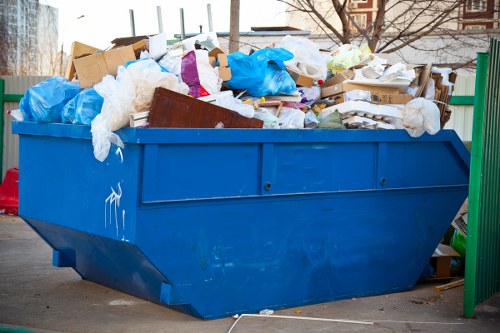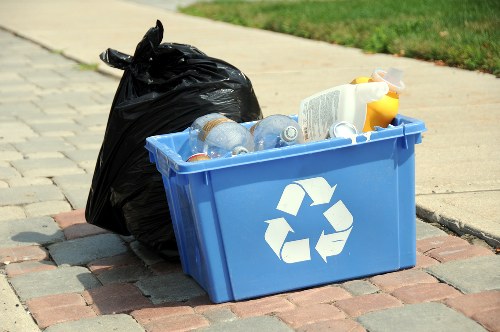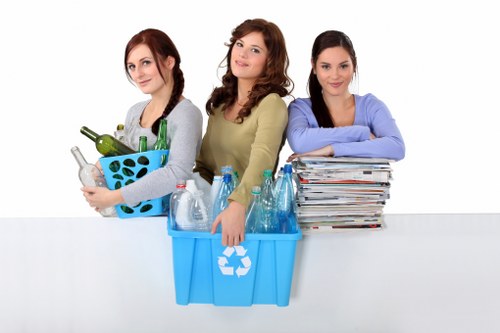Waste Clearance in Mattress Collection
Introduction

Managing waste effectively is a critical component of maintaining environmental sustainability and public health. One significant area of waste management is mattress collection, which addresses the disposal of bulky and often improperly discarded mattresses. Proper waste clearance in mattress collection ensures that these large items are handled responsibly, reducing environmental impact and promoting recycling and reuse.
Mattresses can be challenging to dispose of due to their size, composition, and the materials they contain. Without proper clearance methods, mattresses can accumulate in landfills, contributing to environmental degradation and occupying valuable space. Therefore, efficient waste clearance strategies are essential for both individual households and businesses involved in mattress production and retail.
In this article, we will explore the various aspects of waste clearance in mattress collection, including the importance of proper disposal, available methods, benefits of effective management, regulations governing waste clearance, and best practices for ensuring sustainable handling of mattress waste.
Importance of Proper Waste Clearance

Effective waste clearance in mattress collection plays a vital role in environmental conservation. Mattresses often contain materials such as foam, metal springs, and textiles, which can take years to decompose in landfills. Improper disposal can lead to the release of harmful chemicals and pollutants into the soil and water systems, posing risks to both ecosystems and human health.
Additionally, mattresses occupy significant space in landfills, exacerbating the issue of limited landfill capacity. As urban populations grow, the demand for sustainable waste management solutions becomes increasingly urgent. Proper clearance practices help mitigate these challenges by promoting the recycling and repurposing of mattress materials, thereby reducing the overall environmental footprint.
From a community perspective, improper mattress disposal can lead to aesthetic and sanitation issues. Accumulated waste can attract pests, generate unpleasant odors, and create unsightly environments. Ensuring that mattresses are collected and cleared appropriately contributes to the overall cleanliness and health of neighborhoods.
Methods of Mattress Waste Clearance

Recycling
Recycling is one of the most sustainable methods for mattress waste clearance. It involves breaking down mattresses into their constituent materials, such as steel, foam, and fabric, which can then be reused in the production of new products. This process not only conserves natural resources but also reduces the demand for raw materials, leading to lower production costs and decreased environmental impact.
Donating
Donating mattresses is another effective waste clearance method, provided that they are still in good condition. Numerous organizations and charities accept used mattresses, refurbishing them for resale or reuse by those in need. This approach extends the lifecycle of mattresses, promotes social welfare, and decreases the volume of waste directed to landfills.
Landfill Disposal
While recycling and donating are preferable, landfill disposal remains a common method for mattress waste clearance. It involves transporting mattresses to designated waste disposal sites, where they are buried alongside other municipal solid waste. However, this method is less sustainable due to the long decomposition period and potential environmental hazards associated with landfill accumulation.
Benefits of Effective Mattress Waste Clearance

- Environmental Protection: Reduces landfill usage and minimizes pollution.
- Resource Conservation: Promotes recycling and reuse of materials.
- Cost Savings: Lowers waste management expenses for businesses and municipalities.
- Public Health: Prevents the spread of pests and disease-causing agents.
- Regulatory Compliance: Ensures adherence to environmental laws and standards.
Implementing effective waste clearance practices for mattress collection brings numerous advantages. Environmentally, it mitigates the strain on landfills and decreases the release of harmful substances into nature. Economically, recycling and repurposing materials can reduce costs associated with raw material procurement and waste management.
From a public health standpoint, proper mattress disposal prevents the proliferation of pests and the contamination of living spaces, thereby safeguarding community well-being. Additionally, adhering to waste clearance regulations helps organizations avoid legal penalties and enhances their reputation as responsible entities committed to sustainability.
Regulations Governing Mattress Waste Clearance

Local and National Laws
Waste clearance in mattress collection is subject to various local and national regulations designed to ensure environmentally sound disposal practices. These laws may mandate specific methods for disposal, recycling targets, and reporting requirements for businesses involved in mattress manufacturing and retail. Non-compliance can result in significant fines and legal repercussions.
Extended Producer Responsibility (EPR)
Extended Producer Responsibility policies hold manufacturers accountable for the entire lifecycle of their products, including end-of-life disposal. Under EPR, mattress producers are responsible for establishing and funding collection, recycling, and disposal programs. This approach incentivizes companies to design more sustainable products and invest in efficient waste management systems.
Permitting and Licensing
Facilities engaged in mattress waste clearance, particularly recycling centers and landfills, often require specific permits and licenses to operate. These regulatory measures ensure that such facilities meet environmental standards and follow best practices for handling and processing mattress waste, thereby minimizing potential negative impacts.
Best Practices for Mattress Waste Clearance
Adopting best practices in mattress waste clearance can enhance efficiency, sustainability, and compliance. Here are some key strategies:
- Implement Recycling Programs: Establish partnerships with recycling facilities to ensure that mattress materials are processed and reused effectively.
- Educate Consumers: Inform the public about proper mattress disposal methods and available recycling options to increase participation.
- Optimize Collection Logistics: Develop efficient collection and transportation systems to minimize costs and carbon emissions.
- Maintain Compliance: Stay updated on relevant regulations and ensure that all waste clearance activities adhere to legal requirements.
- Monitor and Report: Track waste clearance metrics and report progress to stakeholders to demonstrate commitment to sustainability.
By integrating these best practices, organizations can create a robust framework for mattress waste clearance that supports environmental stewardship and operational excellence.
Contact us today to learn more about our sustainable mattress waste clearance services and how we can help you manage your mattress disposal responsibly.
Technologies in Mattress Waste Clearance
Advanced Recycling Techniques
Innovative recycling technologies have revolutionized mattress waste clearance, allowing for more efficient separation and processing of materials. Mechanical shredders, magnetic separators, and air classifiers are among the technologies used to break down mattresses into reusable components. These advancements enhance the quality and quantity of recycled materials, making recycling a more viable and attractive option.
Automated Collection Systems
Automation in collection systems streamlines the process of gathering and transporting mattresses for disposal. Automated scheduling, route optimization, and real-time tracking reduce operational costs and improve service reliability. Such systems ensure timely and efficient mattress collection, enhancing overall waste management performance.
Environmental Monitoring Tools
Environmental monitoring tools are essential for assessing the impact of mattress waste clearance activities. Sensors and data analytics platforms track key metrics such as emissions, energy consumption, and material throughput. This data-driven approach facilitates continuous improvement and helps organizations achieve their sustainability goals.
Embracing advanced technologies in mattress waste clearance not only boosts operational efficiency but also contributes to more sustainable and environmentally friendly disposal practices. Book your service now to leverage cutting-edge solutions for your mattress waste management needs.
Challenges in Mattress Waste Clearance
Despite the benefits, mattress waste clearance faces several challenges that can hinder effective management. Understanding and addressing these obstacles is crucial for developing successful waste management strategies.
- Logistical Complexity: The bulky nature of mattresses makes collection and transportation difficult, requiring specialized vehicles and handling procedures.
- High Disposal Costs: The expenses associated with recycling and landfill disposal can be substantial, particularly for large quantities of mattresses.
- Limited Recycling Facilities: The availability of facilities equipped to process mattress materials varies by region, potentially limiting recycling opportunities.
- Regulatory Barriers: Navigating the complex landscape of waste disposal regulations can be challenging for businesses and municipalities.
- Public Awareness: Lack of awareness about proper mattress disposal methods can result in higher rates of improper disposal and increased environmental impact.
Addressing these challenges requires a multifaceted approach that includes investing in infrastructure, fostering partnerships, enhancing regulatory frameworks, and promoting public education initiatives.
Contact us today to overcome the challenges of mattress waste clearance with our expert solutions and support.
Future Trends in Mattress Waste Clearance
The field of mattress waste clearance is evolving, with several emerging trends poised to shape its future landscape. Staying abreast of these developments can help organizations and individuals adopt more effective and sustainable practices.
Circular Economy Models
The circular economy model emphasizes minimizing waste and maximizing the reuse and recycling of materials. In the context of mattress waste clearance, this approach encourages the creation of closed-loop systems where mattress components are continually repurposed, reducing the need for virgin materials and decreasing environmental impact.
Biodegradable Materials
Advancements in material science are leading to the development of biodegradable and eco-friendly mattress components. These materials can decompose naturally, lessening the environmental burden associated with mattress disposal and facilitating more sustainable waste clearance practices.
Smart Waste Management Systems
The integration of smart technologies such as the Internet of Things (IoT) and artificial intelligence (AI) is enhancing waste management systems. These technologies enable real-time monitoring, predictive analytics, and optimized operations, resulting in more efficient and responsive mattress waste clearance processes.
Embracing these future trends can drive significant improvements in mattress waste clearance, fostering a more sustainable and resilient waste management ecosystem. Book your service now to stay ahead with our forward-thinking waste clearance solutions.